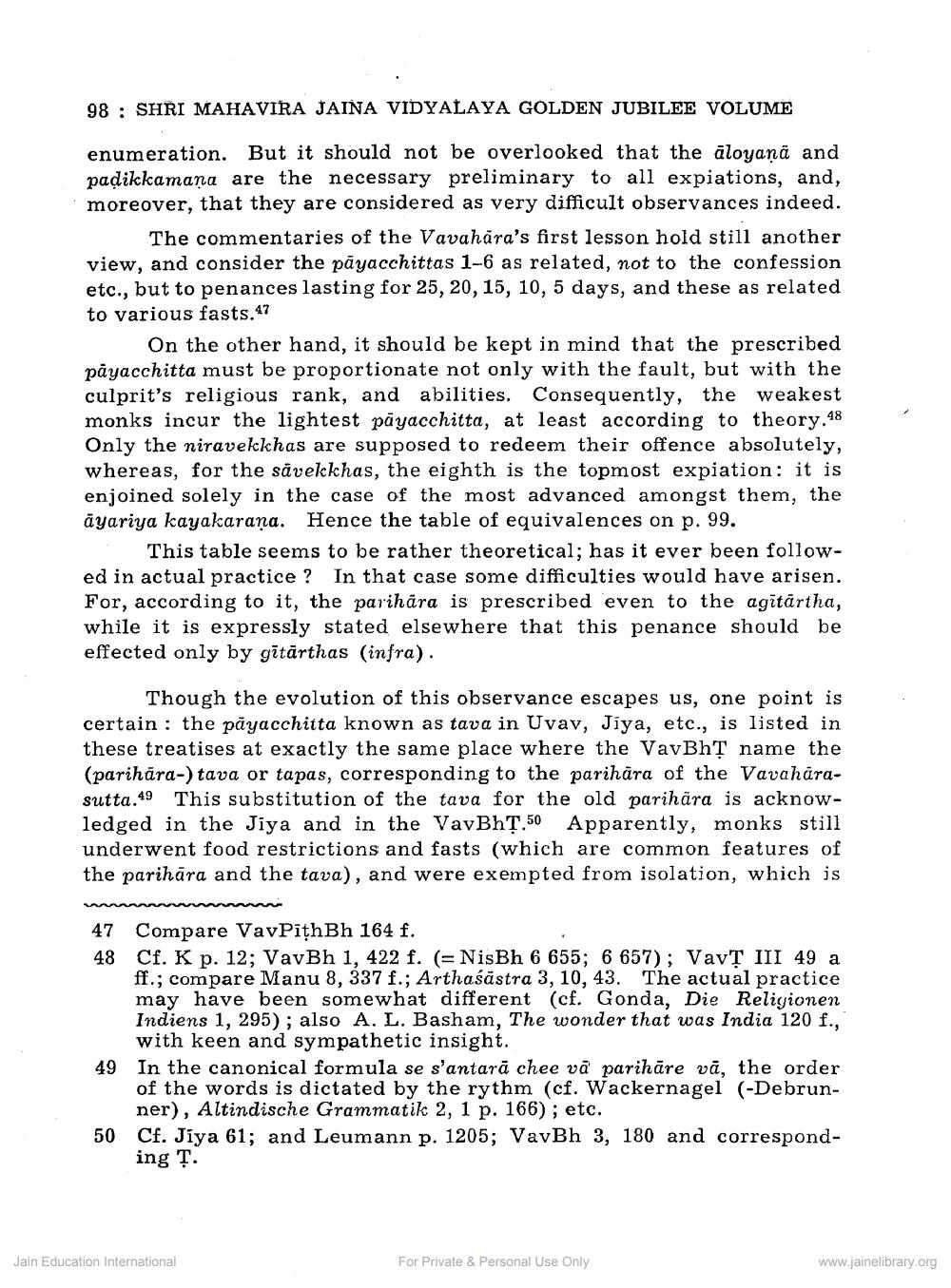________________
98 : SHRI MAHAVIRA JAINA VIDYALAYA GOLDEN JUBILEE VOLUME
enumeration. But it should not be overlooked that the āloyana and padikkamana are the necessary preliminary to all expiations, and, moreover, that they are considered as very difficult observances indeed.
The commentaries of the Vavahāra's first lesson hold still another view, and consider the pāyacchittas 1-6 as related, not to the confession etc., but to penances lasting for 25, 20, 15, 10, 5 days, and these as related to various fasts.47
On the other hand, it should be kept in mind that the prescribed pāyacchitta must be proportionate not only with the fault, but with the culprit's religious rank, and abilities. Consequently, the weakest monks incur the lightest pāyacchitta, at least according to theory.48 Only the niravekkhas are supposed to redeem their offence absolutely, whereas, for the săvekkhas, the eighth is the topmost expiation: it is enjoined solely in the case of the most advanced amongst them, the āyariya kayakarana. Hence the table of equivalences on p. 99.
This table seems to be rather theoretical; has it ever been followed in actual practice? In that case some difficulties would have arisen. For, according to it, the parihara is prescribed even to the agitartha, while it is expressly stated elsewhere that this penance should be effected only by gītārthas (infra).
Though the evolution of this observance escapes us, one point is certain : the pāyacchitta known as tava in Uvav, Jiya, etc., is listed in these treatises at exactly the same place where the VavBhT name the (parihära-) tava or tapas, corresponding to the parihära of the Vavahārasutta.49 This substitution of the tava for the old parihara is acknowledged in the Jiya and in the VavBh?.50 Apparently, monks still underwent food restrictions and fasts (which are common features of the parihāra and the tava), and were exempted from isolation, which is
47 Compare VavPithBh 164 f. 48 Cf. K p. 12; VavBh 1, 422 f. (=NisBh 6 655; 6 657); Vavt III 49 a
ff.; compare Manu 8, 337 f., Arthaśāstra 3, 10, 43. The actual practice may have been somewhat different (cf. Gonda, Die Religionen Indiens 1, 295); also A. L. Basham, The wonder that was India 120 f.,
with keen and sympathetic insight. 49 In the canonical formula se s'antarā chee va parihāre vă, the order
of the words is dictated by the rythm (cf. Wackernagel (-Debrun
ner), Altindische Grammatik 2, 1 p. 166); etc. 50 Cf. Jiya 61; and Leumann p. 1205; VavBh 3, 180 and correspond
ing T.
Jain Education International
For Private & Personal Use Only
www.jainelibrary.org




